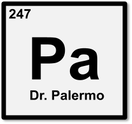This year I ditched the old cookbook chemistry labs and simple inquiry labs for a more authentic inquiry lab approach. I give students a research question and each lab group makes predictions/models/explanatory hypotheses based upon that question. Then they determine the variables and decide how they are going to collect evidence to test their predictions/models/explanatory hypotheses. Students then examine their evidence and make a claim to answer their research question. Finally the provide justification as to why their evidence supports their claim using scientific principles. Students then critique each groups' scientific argument to provide feedback. When they return to their original lab group they can assess the critiques and make any changes before submitting their final argument to me on google classroom. So far this has been a great experience for me and my students. They have expressed greater interest in the lab activities and have surprised me with their abilities in designing their investigations. When a student said to me last week, "I was struggling to make a prediction so I decided to make a model first to help me understand the problem" I knew I made the right choice in changing my labs. If you would like to see what I am doing click on the in class labs tab at the top of my webpage where you can access my google drive folder.
|
|
AuthorI currently teach Regents level chemistry to 10th grade students utilizing flipped/blended instruction and the 5E approach to learning. Archives
October 2017
Categories |

 RSS Feed
RSS Feed




